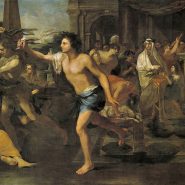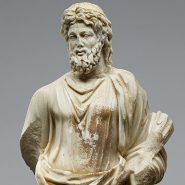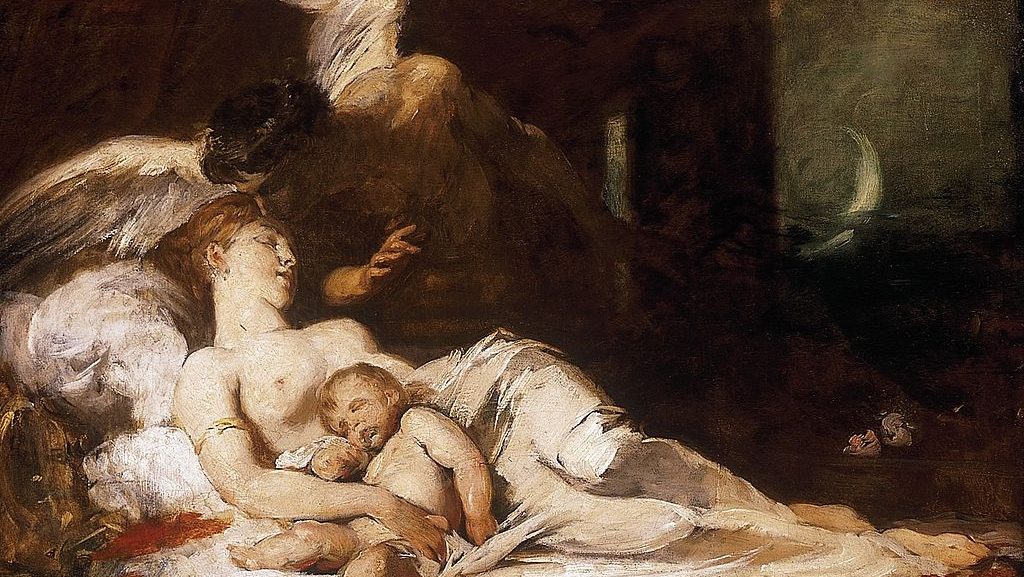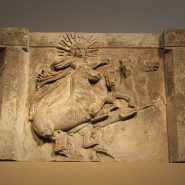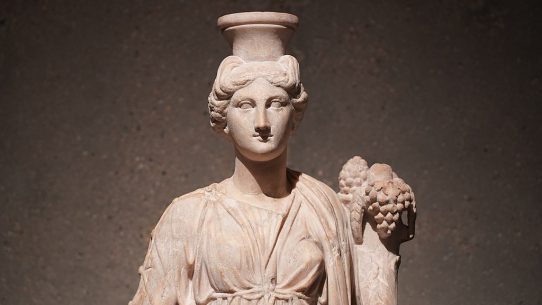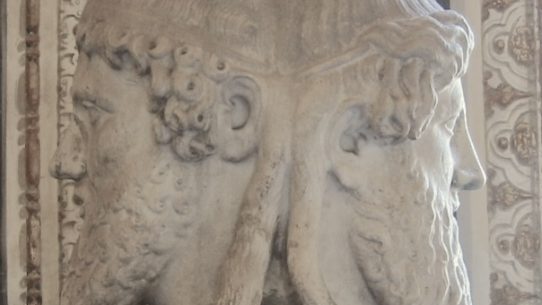In the vast pantheon of Roman deities, Somnus stands apart as the silent keeper of dreams and rest — the gentle god who governs the boundary between wakefulness and oblivion.
Where other gods wield thunderbolts or command seas, Somnus reigns over something far subtler: the surrender of consciousness itself. His dominion is not over battlefields or temples, but over the hush that settles when the world succumbs to night.
The Nature of Somnus
Somnus was the Roman god of sleep, known to the Greeks as Hypnos. While the Romans often adopted Greek myths and reshaped them to fit their worldview, Somnus retained a distinct character within Roman imagination. He personified not merely the act of sleeping, but the very essence of rest — the balm for mortal suffering and divine fatigue alike.
Ancient poets described his dwelling as a place of stillness, hidden deep within the earth or a dark valley untouched by sunlight. Ovid’s Metamorphoses paints a vivid picture of this realm: a cave surrounded by poppies and herbs that induce drowsiness, with no cockerel to announce dawn, no barking dogs, no rustling branches — only the soft murmur of a nearby stream. From this tranquil sanctuary, Somnus sends dreams to the living, carried on the wings of his sons, the Oneiroi.
The Oneiroi: Messengers of Dreams
Somnus was said to be the father of three principal dream spirits: Morpheus, Phobetor, and Phantasos. Each had a specific role in shaping the visions that visited sleepers.
- Morpheus, the most famous, molded dreams that imitated human forms and voices.
- Phobetor specialized in transforming into animals and beasts, bringing fearful or chaotic visions.
- Phantasos created inanimate dreamscapes — rocks, trees, rivers, and clouds.
Together, they populated the minds of gods and mortals alike, ensuring that even in slumber, imagination remained alive. Through these children, Somnus’s reach extended beyond mere rest into the rich realm of dream and symbol, where messages from the divine might be revealed.
Somnus in Myth and Literature
Somnus does not often play a leading role in Roman mythology; instead, he appears briefly but powerfully in tales that explore the thin veil between life and death.
One of his most memorable appearances is in Metamorphoses, when Juno (the Roman Hera) sends Iris to the cave of Somnus to command him to dispatch a dream to the grieving queen Alcyone. The dream, crafted by Morpheus, takes the form of her drowned husband Ceyx, bringing both sorrow and acceptance. This episode reflects how the Romans viewed Somnus not merely as a god of rest but as a mediator between worlds, carrying messages that could heal or devastate.
Virgil also alludes to Somnus in the Aeneid, where sleep becomes a powerful symbol of fate and surrender. In Book V, Somnus lulls the helmsman Palinurus into unconsciousness, causing his fall into the sea — a tragic act that underscores the god’s dual nature: both merciful and merciless. Sleep may comfort the weary, but it can also lead to ruin if it comes unbidden.
Symbolism and Depictions
Artists and poets alike have long portrayed Somnus as a youthful, winged figure — delicate yet powerful, often holding a poppy or pouring sleep from a horn. The wings, sometimes attached to his temples or shoulders, signify the fleeting nature of dreams and the lightness of slumber. The poppy, his sacred flower, was associated with both sleep and death, for its opium brought both rest and oblivion.
In Roman art, Somnus is frequently shown reclining or leaning against a rock, his eyes gently closed, while butterflies or small spirits flutter around him. The butterfly, symbol of the soul, represents the transformation that occurs in sleep — a daily rehearsal of death and rebirth. The connection between Somnus and his brother Mors (Death) was close and often emphasized: “Somnus et Mors sunt fratres,” the poets would say — Sleep and Death are brothers.
The Realm of Somnus
According to Ovid’s poetic vision, the cave of Somnus lay in perpetual twilight, beyond the reach of dawn. The god himself slept on a black couch, surrounded by countless dreams that drifted like mist through the air. At his command, these dreams could take form and slip through the cracks of the mortal world. The imagery evokes the Roman understanding of sleep as a divine state — both restorative and perilous. To sleep was to enter the dominion of a god who demanded surrender.
In Roman households, sleep was often personified in art or invoked in charms, especially for children and the ill. Somnus was not worshiped in large temples, but in private prayers and quiet devotions. His presence was intimate, felt each night when the body yielded to rest. This intimacy gave him a unique place among the gods: a deity who visited everyone, rich and poor alike, in their most vulnerable moments.
Influence on Later Thought
The legacy of Somnus extended beyond Rome into the Renaissance, where he appeared in art and allegory as the serene counterpart to Death. Painters such as Rubens and Caravaggio captured his tranquil beauty, often reclining amid shadows, his poppies scattered around him. Poets used his name as a metaphor for peace, forgetfulness, and sometimes creative inspiration — since sleep was believed to open the gates of imagination.
Even in modern times, the language of Somnus survives. The medical term somnolence (drowsiness) and words like insomnia (lack of sleep) trace their roots back to his divine name. The persistence of these terms reminds us how deeply embedded the ancient mythology remains in our understanding of human rest.
The Meaning of Sleep in Roman Thought
To the Romans, sleep was more than a biological necessity — it was a sacred interval. It allowed mortals to commune with the divine, to glimpse truths beyond waking reason. Somnus represented the gentle balance between body and spirit, between the conscious and the unknown. His power was feared yet cherished, for without sleep, no life could endure.
In philosophical writings, sleep often symbolized moral or spiritual rest. Stoic thinkers saw it as a time when the soul temporarily withdrew from the chaos of the senses. To surrender to Somnus was to acknowledge the limits of human strength and the need for renewal.
Somnus and the Eternal Cycle
Sleep, death, and rebirth formed a triad that fascinated Roman thinkers. Each night’s rest was a miniature death; each dawn, a resurrection. Somnus, as the god who presided over this rhythm, stood as a quiet reminder of mortality’s grace. In his realm, the restless found peace, the wounded found healing, and the weary found a fleeting eternity.
Legacy and Reflection
Though Somnus may seem a minor god compared to Jupiter or Mars, his presence endures in every moment of rest. He represents the kindness of nature, the stillness that follows toil, and the mystery that lies between one heartbeat and the next. His myths teach that even the most powerful beings must pause and dream — that within stillness lies the seed of renewal.

